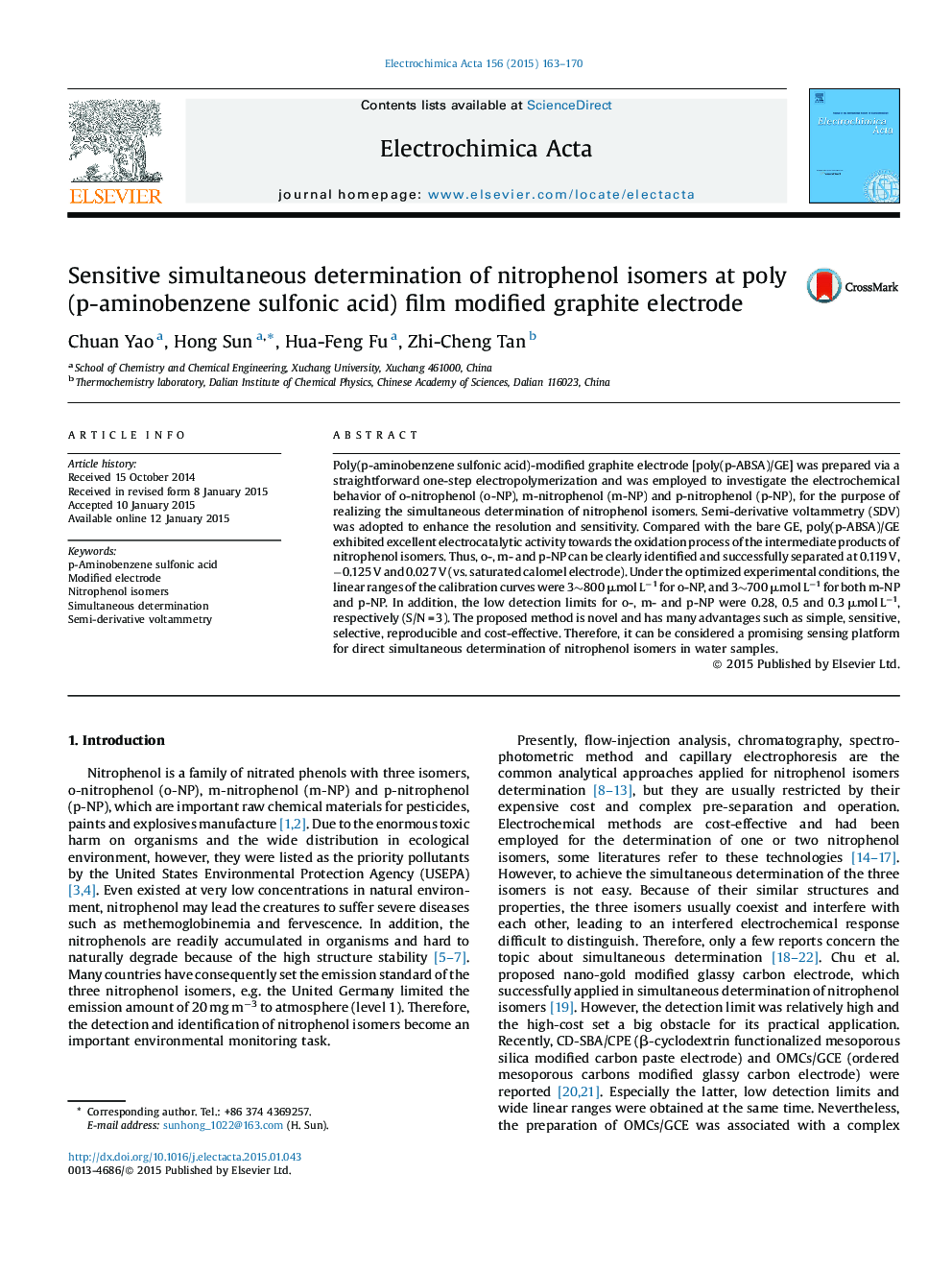| Article ID | Journal | Published Year | Pages | File Type |
|---|---|---|---|---|
| 184515 | Electrochimica Acta | 2015 | 8 Pages |
•Nitrophenol isomers can be clearly identified and separated at poly(p-ABSA)/GE.•Wide linear ranges and low detection limits are obtained.•The proposed method is selective, sensitive, reproducible and cost-effective.
Poly(p-aminobenzene sulfonic acid)-modified graphite electrode [poly(p-ABSA)/GE] was prepared via a straightforward one-step electropolymerization and was employed to investigate the electrochemical behavior of o-nitrophenol (o-NP), m-nitrophenol (m-NP) and p-nitrophenol (p-NP), for the purpose of realizing the simultaneous determination of nitrophenol isomers. Semi-derivative voltammetry (SDV) was adopted to enhance the resolution and sensitivity. Compared with the bare GE, poly(p-ABSA)/GE exhibited excellent electrocatalytic activity towards the oxidation process of the intermediate products of nitrophenol isomers. Thus, o-, m- and p-NP can be clearly identified and successfully separated at 0.119 V, −0.125 V and 0.027 V (vs. saturated calomel electrode). Under the optimized experimental conditions, the linear ranges of the calibration curves were 3∼800 μmol L−1 for o-NP, and 3∼700 μmol L−1 for both m-NP and p-NP. In addition, the low detection limits for o-, m- and p-NP were 0.28, 0.5 and 0.3 μmol L−1, respectively (S/N = 3). The proposed method is novel and has many advantages such as simple, sensitive, selective, reproducible and cost-effective. Therefore, it can be considered a promising sensing platform for direct simultaneous determination of nitrophenol isomers in water samples.
Graphical abstractFigure optionsDownload full-size imageDownload as PowerPoint slide
